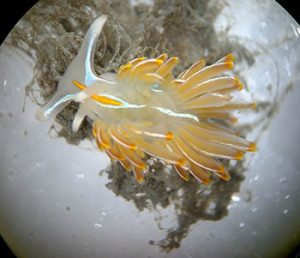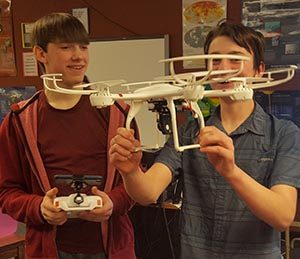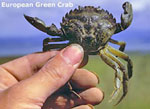Citizen scientists, the Prince William Sound College, the Smithsonian Environmental Research Center, and the council partner for invasive species event in Prince William Sound
Linda McCann
Smithsonian Environmental Research Center

A crew of marine biologists ventured to Prince William Sound this September for the third Smithsonian-led “bioblitz” in Alaska, this time in Valdez. During a bioblitz, volunteer citizen scientists team up with professional scientists to search for invasive marine invertebrates. This year, the Smithsonian partnered with the council and Prince William Sound College for a week of scientific sampling.
Three months before the bioblitz, council staff placed “settlement plates,” sheets of sanded PVC that the invertebrates attach to over time. During the bioblitz, volunteers and staff collected the plates, towed plankton nets, set crab traps, and went scuba diving, to look for various nonnative species.
The study helped establish critical baseline data for future research, invasive species management, and conservation initiatives. Fortunately, no new non-native species were found during the bioblitz or the scientific sampling.

 The council is collaborating with the Prince William Sound College and the Smithsonian for a two-day Marine Invasive Species Bioblitz on September 9 and 10 in Valdez. Learn about invasive species that threaten Prince William Sound and look for them in Valdez Harbor.
The council is collaborating with the Prince William Sound College and the Smithsonian for a two-day Marine Invasive Species Bioblitz on September 9 and 10 in Valdez. Learn about invasive species that threaten Prince William Sound and look for them in Valdez Harbor.